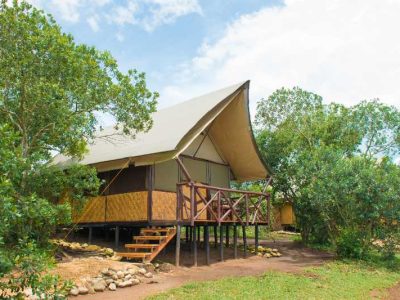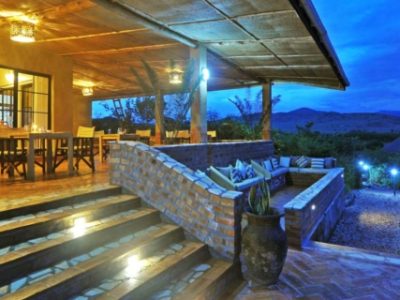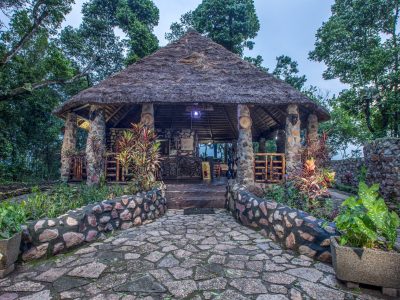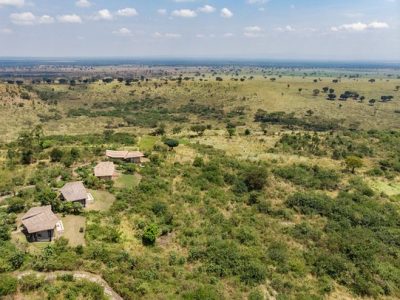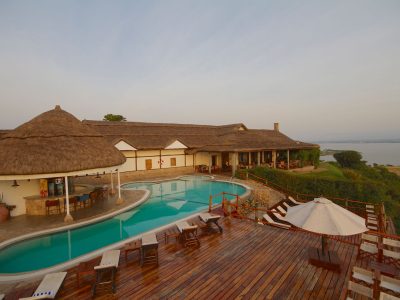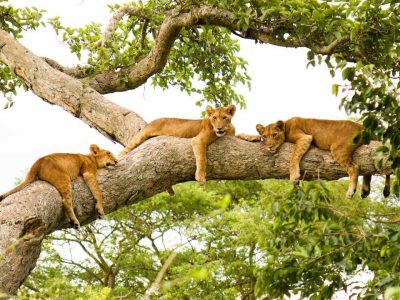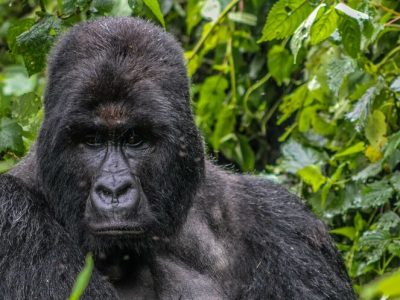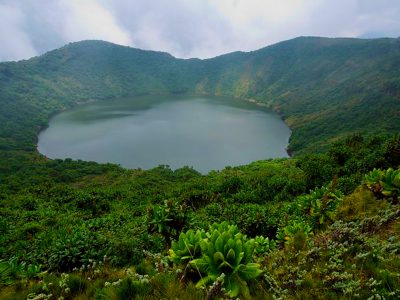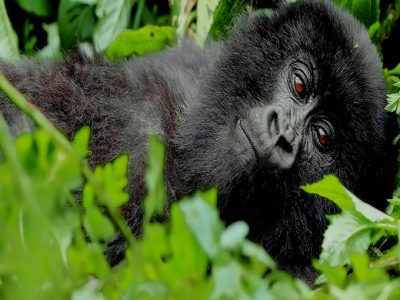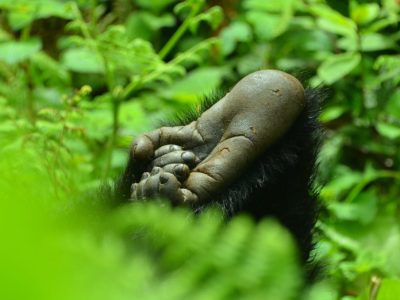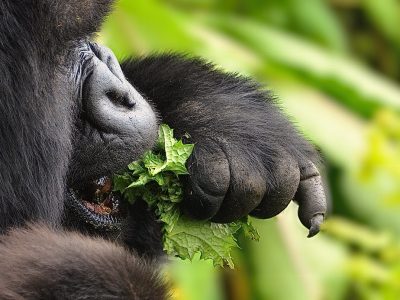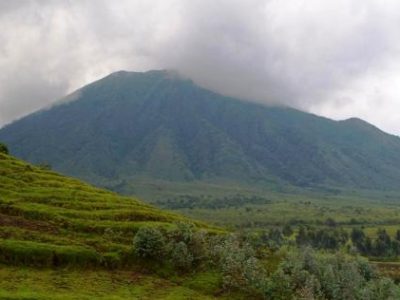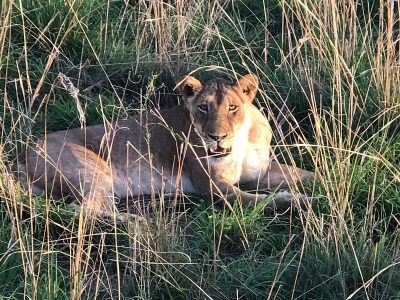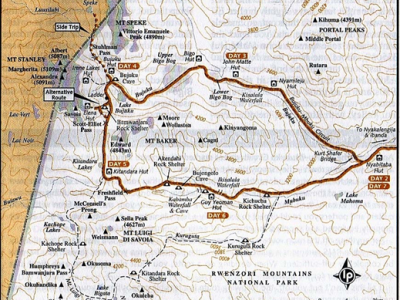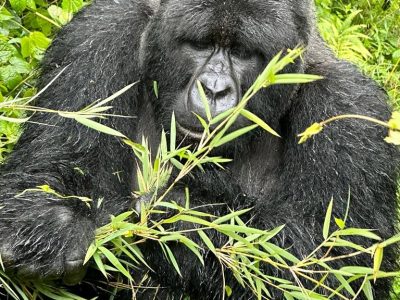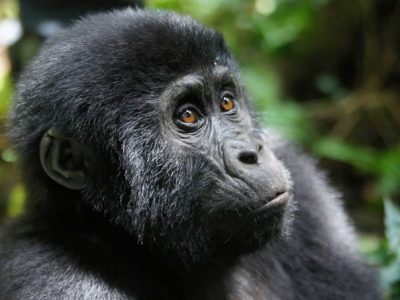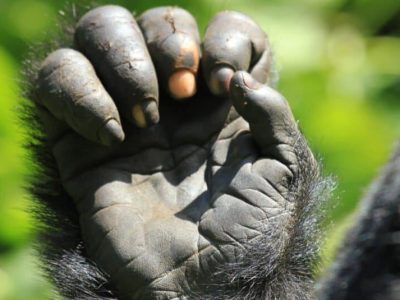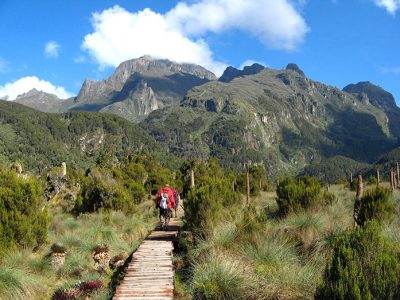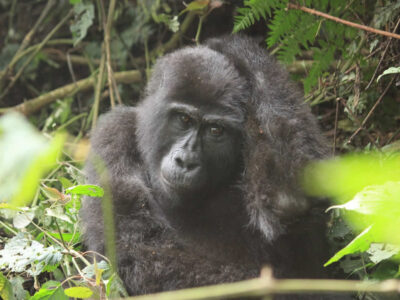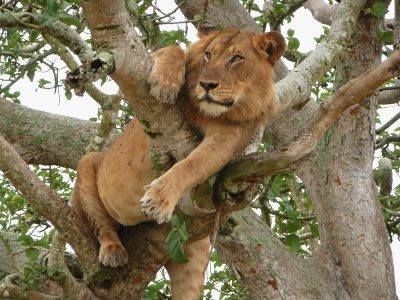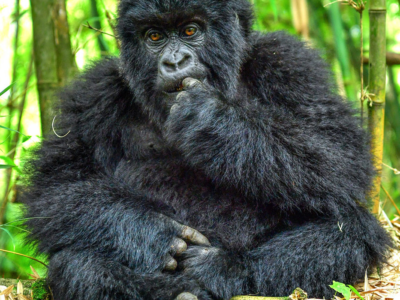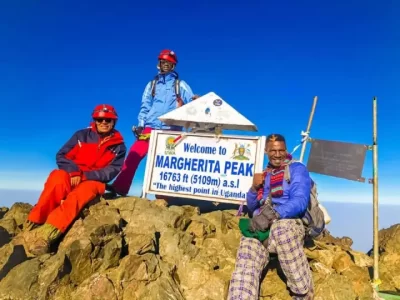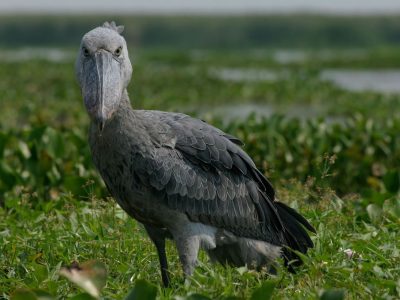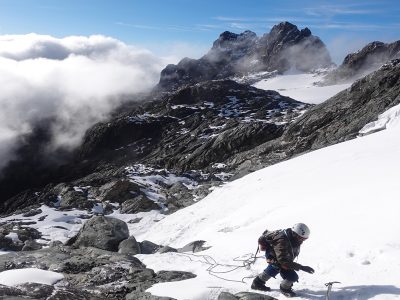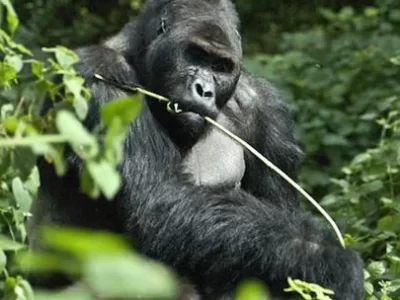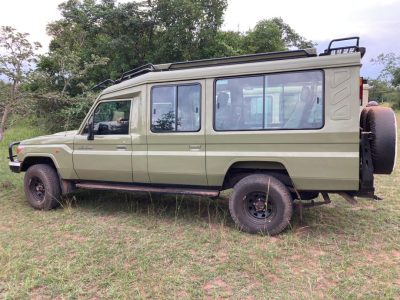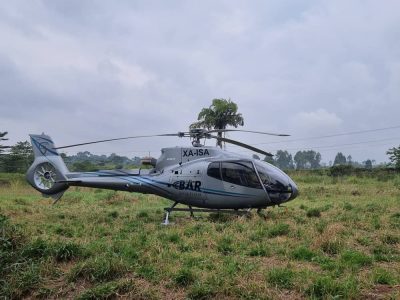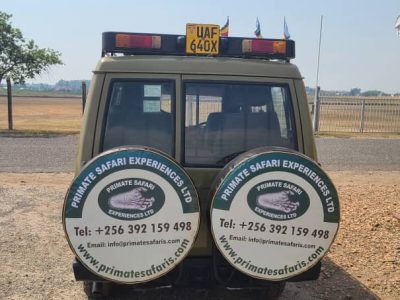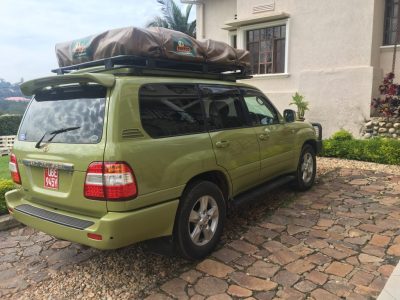Queen Elizabeth National Park
Queen Elizabeth national park lies in the western part of Uganda, spanning the districts of kasese, kamwenge, bushenyi and Rukungiri Its location is approximately 376 kilometers by road, southwest of Kampala. The park is named after Queen Elizabeth II and was established in 1954, the park was later renamed Ruwenzori before it returned to its royal name. Queen Elizabeth national park is known for its wildlife, hippos, elephants, buffaloes, lions, warthogs, antelopes, and crocodiles, chimps, among others .It is now home to 95 species of mammals and over 500 species of birds. The area around ishasha in Rukungiri District is famous for its tree-climbing lions, whose males sport black manes, a feature unique to the lions in this area.
The park is also famous for its volcanic features, including volcanic cones and deep craters, many with crater lakes, such as the katwe craters from which salt is extracted.
Queen Elizabeth National Park includes the maramagambo forest and borders the Kigezi Game Reserve, the kyambura game reserve, and the Kibale National Park in Uganda, and the Virunga National Park in the Democratic Republic of the Congo.
When to visit queen
Best time to go is January to February and June to July which is the dry season
High season is from June to September which is even a premium time for gorilla tracking in Uganda and more people visit the country.
Low season starts from April, May, October and November, there are less people in the park.
Best weather is from June to July and January to February, less rainfall.
Worst weather is from April, May and September to November, high rainfall, some roads become very dirty.
What to see in Queen
Lake George
the papyrus swamps of this Ramsar wetland site are home to the semi-aquatic sitatunga antelope. One can spot the elusive Shoebill plus other native birds on Lake George.
Explosion Craters
The huge round basins scattered across the equator are evidence of the Albertine Rift’s bubbling volcanic past, and are a must-see for those with a particular interest in the region's fascinating geological history.
The 27km drive between Kabatoro gate and Queen’s Pavilion takes in views of the enormous craters, circular lakes, the Rift Valley escarpment and the Kazinga channel - all in front of the mighty backdrop of the Rwenzori Mountains.
Katwe
Katwe is one of the most famous lookout points in Uganda is in the Katwe-Kabatoro community on Katwe Salt Lake where traditional salt mining has been practiced since the 16th century. The neighboring Lake Munyanyange is a bird paradise, as well as a migratory location for the lesser flamingo from August to November.
Kasenyi Plains
The vast savannah of Kasenyi is the perfect setting for a classic African safari experience with
huge herds of Uganda kob attract prides of lions; warthogs graze bent down on their knees; guinea fowl scuttle through the grassland; and huge dark elephants stride across the game drive tracks, providing dream photo opportunities for visitors.
The tracks through Kasenyi, the North Kazinga Plains and the Ishasha Sector offer virtually guaranteed buffalo, antelope and elephant sightings, along with warthogs and baboons. Taking an experienced guide in the early morning or at dusk is the most successful way to track down a pride of lions, and maybe even the odd leopard.
Mweya Peninsula
Mweya is Queen’s focal point and it contains the Visitors Centre, a luxury lodge and restaurant, hostel, campsite, budget food options and the departure point for the Kazinga Channel launch trip and it is still jam-packed with birds and animals. It has gorgeous views of the Kazinga Channel and surrounding savanna, and its proximity to Kasenyi and the North Kazinga plains make it an ideal departure point for wildlife-filled game drives in the morning or evening.
Hiking and nature walks in Queen
Nature treks are one of the more active ways to explore the landscapes and wildlife of Queen Elizabeth. Locations include the shady Maramagambo forest; Mweya Peninsula with its scenic views; and Ishasha River, where you may spot a variety of forest and savanna species as well as having a unique opportunity to get extremely close to hippos - on foot.
Kazinga Channel
A cruise down the Kazinga channel is the most relaxing way to enjoy a wildlife safari in Queen. The banks are crammed with hippos, buffalos and water birds, along with caimans, monitor lizards, weaver birds and elegant pairs of fish eagles. Elephants stride along the banks all you need to do is sit back with your camera or binoculars at the ready, and enjoy the incredible experience of a life time.
Launch trips in Queen
The Kazinga Channel is an oasis for many of the fascinating species that inhabit the park and taking a boat tour along it gives visitors the chance to cruise just meters from hundreds of enormous hippos, crocodiles and buffalos while elephants linger on the shoreline.
Kyambura Gorge
The Kyambura River flows through this thick “underground forest”, 100 meters below the Kichwamba escarpment. The gorge is best known for its resident chimpanzees – some of which are habituated and can be tracked through the forest with trained UWA guides. While walking through the gorge, you may spot other primates and some of the many birds found in the forest. The entrance to the gorge is also a pleasant spot for a picnic.
Kyambura Wildlife Reserve
the beautiful crater lakes of this reserve, located to the east of Kyambura Gorge, offer excellent opportunities to observe many water birds including greater and lesser flamingoes and the great egret.
Maramagambo Forest (chimp tracking)
The Kyambura Gorge experience is more than discovering chimpanzees in their natural environment: it teaches visitors about the ecosystems of Kyambura Gorge’s atmospheric “underground” rainforest, including vegetation types; bird identification and behavior; and chimp and monkey ecology. The primates include chimpanzees, baboons and several monkey species; the forest is also alive with numerous birds including the rare Forest Flycatcher, White-naped Pigeon and the striking Rwenzori Turacos. One can also visit the ‘cormorant house’, a large tree that has been turned white by the birds that roost here at night. The shady forest also conceals crater lakes and a “Bat Cave” with a specially constructed viewing room.
Caves in Queen
The shady forest also conceals crater lakes and a “Bat Cave” with a specially constructed viewing beneath the shady canopy of the Maramagambo Forest is the “Bat Cave”. The cave has a viewing room built through funding from the Center for Disease Control in which visitors can observe the bats as well as the pythons that live alongside them. You can a trip to the historic cave at Nyanz’ibiri community, where a local guide will explain to you how it was once used for offering sacrifices and cleansing misfortunes… and as a hiding place during Uganda’s rule by Idi Amin.
Ishasha Sector
This remote southern region enjoys fewer visitors than the north, but those who venture this far may be rewarded with sightings of Ishasha’s most famous residents the tree climbing lions lounging in the branches while keeping a close eye on herds of Uganda kob. It is also home to many buffalo and elephants as well as the rare shoebill. Ishasha is also a convenient region to pass through on the way to Bwindi Impenetrable National Park and mgahinga.
Tree lion
While the big game and primate population found in the park is no doubt a crowd puller, the biggest attraction to the queen Elizabeth national park is without a doubt for its tree climbing lions. The tree climbing lions are mostly to be found in the southern sections of the park near the ishasha area that is dotted with fig trees. The lions been dramatically craved into the rolling green hills of the park, a drive to higher ground offers panoramic views of the kazinga channel which hosts a huge hippo, buffalo and elephants population. The wildlife diversity found in the park is incredible.
Bird life
Birding in Queen Elizabeth national park offers an incredible treat as it contains a variety of habitats that range from savannah variety of habitats that range from savannah grassland to wetlands to lowland forests. This diversity in ecosystems attracts a huge variety of birds which currently number at more than 600 species. This is by far the biggest birdlife population found in any protected area in east Africa. A majority of the birds found in this area are regarded as famous birds of east Africa and are a must see for birdwatchers coming to Uganda.
Cultural encounters in queen
Leopard village
It is a community socio-economic development initiative that promotes cultural and wildlife conservation through ecotourism. It is located near the village of Muhokya; Leopard Village sits on 3 acres bordering the northern sector of Queen Elizabeth National Park. Visitors can tour replicas of the traditional huts of the Banyabindi, Bakonzo, and Basongora ethnic groups, watch traditional song and dance performances, and purchase handicrafts made by local communities.
Kikorongo Women Community
Kikorongo means too much sunshine in the local language of Lukonzo, but the heat of the African plains has not diminished the energy of the Kikorongo Equator Cultural Performers. This vibrant performance, which takes place at lodges around the park, is a wonderful glimpse of life in Kikorongo, with dance, drama, music and fire-making. While a local interpreter explains the significance of the performances, you can sit back and watch village life unfold in front of you. The workshops teach guests how to weave baskets and bowls using natural fibers. They also demonstrate how to recycle magazines into colorful paper beads, which can be made into unique necklaces.
Nyanz’ibiri cave community
after the long game drives with scenic walks around a slice of Ugandan paradise; you take a walk at this community site known as The Cave. Local attractions include a historic cave and Cultural Museum – a perfectly preserved Banyaruguru hut, filled with valued local artifacts that were once the tools of everyday life.
Agro-Tour Walk
Your expert local guide will point out beautiful bird species, exotic and medicinal plants and sites of cultural importance, as well as explaining local farming methods. Visitors will also learn about the enduring challenge of human-animal conflicts in the area, and will tour the beehives that are used to divert destructive elephants away from community crops on the park border. Interested clients will even have the chance to try their hand at honey harvesting. After enjoying the peace of the endless savannah and the shade of the trees, visitors hike back up the escarpment and can return to their lodges.
Wildlife research tours in Queen
Visitors who yearn to get up close to wild African fauna, a research trip is a rewarding adventure. This new and unique experience allows visitors to actively participate in monitoring some of the exotic birds and mammals that fill the park, using locator devices and learn habituation calls, as well as monitoring weather, surroundings and behavior.

